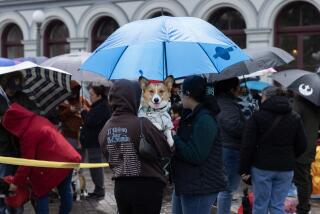Southern California camels, livestock become movie stars in ‘Why the Nativity?’ documentary
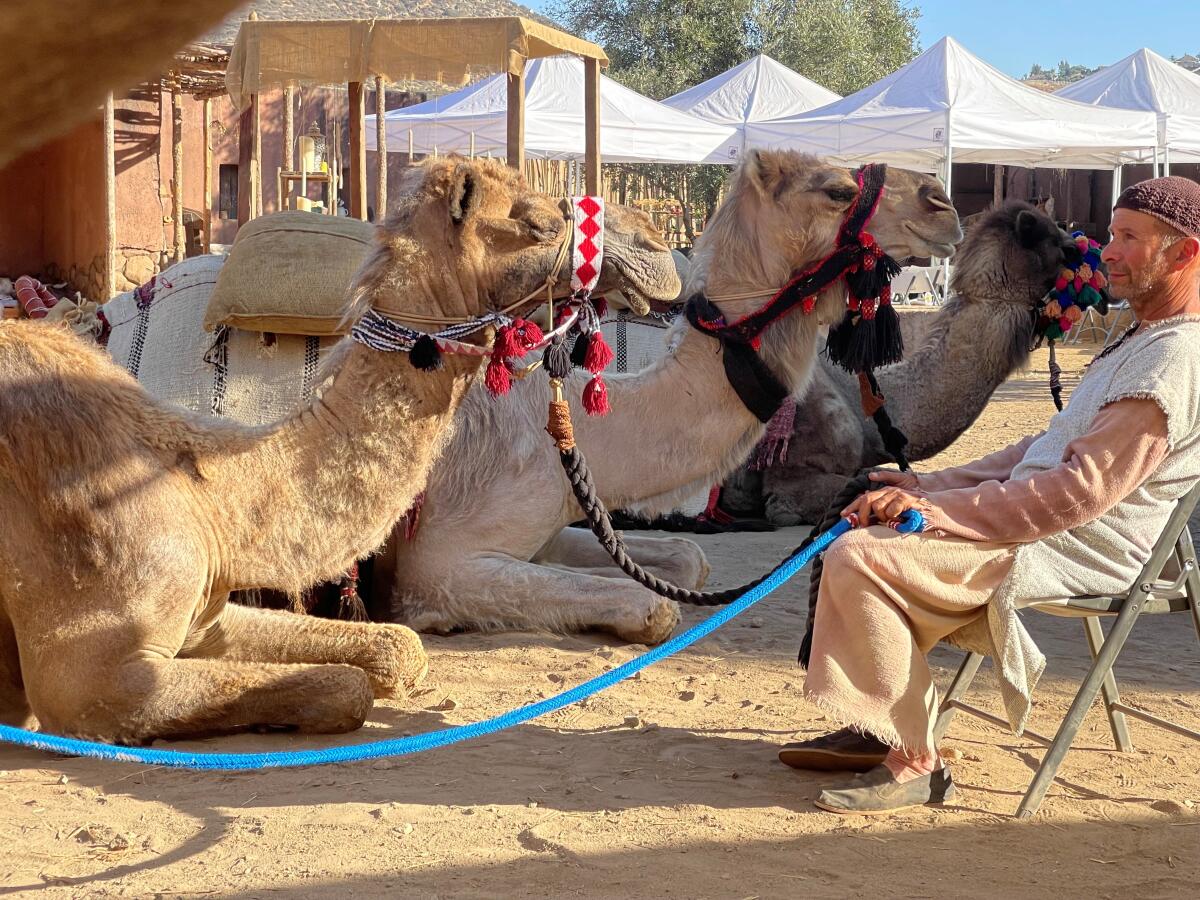
- Share via
A new full-length documentary based on the Nativity was filmed with the help of a Ramona, Calif., production company, livestock from all over town and some iconic locations.
Films centered on the Nativity, which depicts the birth of Jesus Christ, typically feature a lot of animals, and this film was no exception.
The creatures in “Why the Nativity?” — the brainchild of the Rev. David Jeremiah, senior pastor of Shadow Mountain Community Church in El Cajon — were brought together by Ramona’s Gem Canyon Productions, owned by Larry and Racine Poole.
Although the Pooles owned many of the animals used, camels in the film came from Oasis Camel Dairy, a donkey from Hearts & Hands Animal Rescue, and other animals from private residents.
“It was a great shoot and it looked like we had gone back in time,” said Larry Poole.
The film was produced by Turning Point, part of the broadcast ministry of the church. Shooting for the film began in April and was completed in July.
The human cast numbered more than 120, with 220 background extras, 320 crew members and more than 40 live animals. It was the largest scale production to take place in San Diego Country since James Cameron’s “Titanic,” according to the website.
In all, 10 locations were used for the film, including two spots in Ramona.
The Mount Woodson castle served as the interior of Mary’s home, as well as the interior for the Old Testament prophet scene and Julius Caesar’s palace. Mary and Joseph’s courtship was filmed at the Hidden Oaks wedding venue in Ramona.
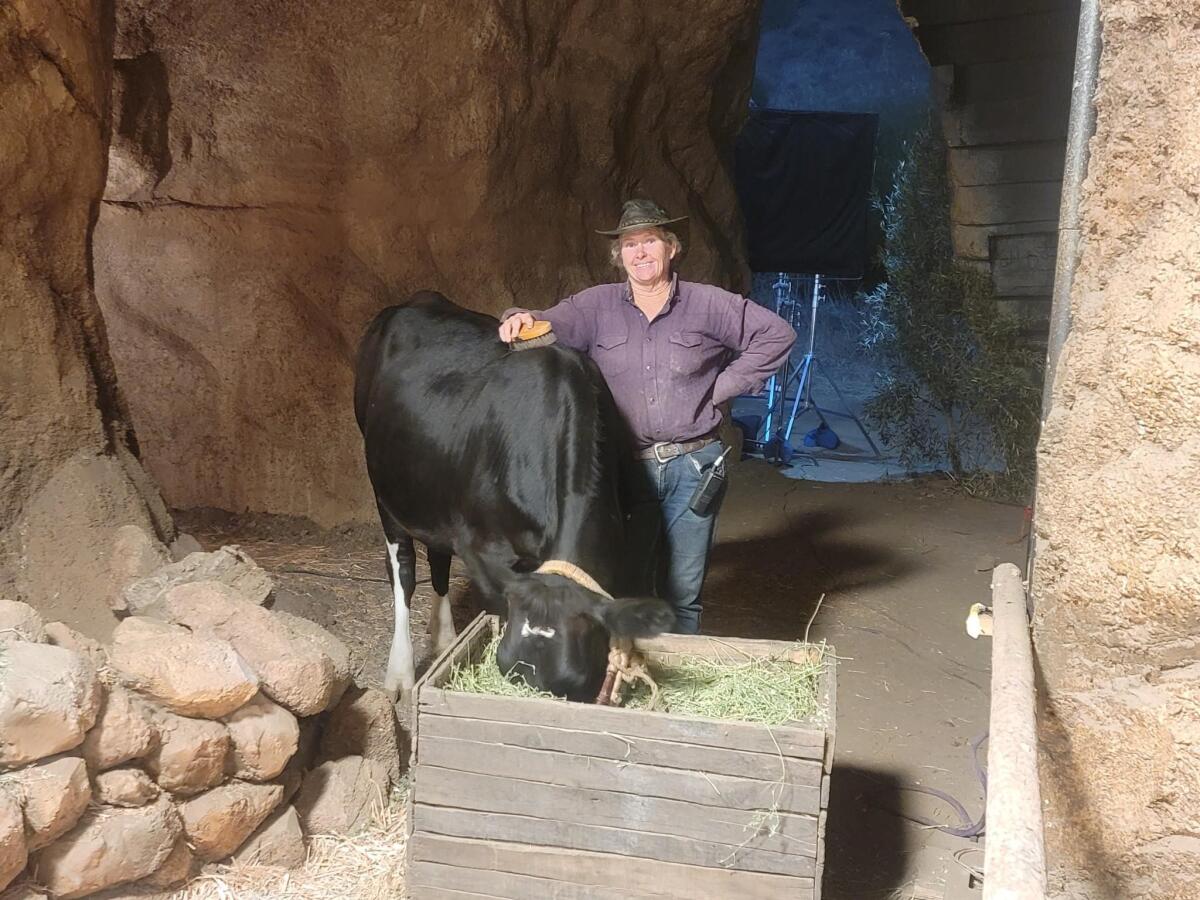
)
The Pooles said that being part of the film was an unexpected gift. Larry Poole was originally asked to be an actor but had to turn it down.
“I couldn’t work on the film as an actor, because as a member of the Screen Actors Guild and American Federation of Television and Radio Artists, it was a non-union role,” said Poole, who has starred in movies such as “Shooting Star” (2022), “Last Shoot Out” (2021) and “A Soldier’s Revenge” (2020).
Then Poole was asked to take on the head wrangler position. So in addition to being in charge of the animals, Poole and Gem Canyon — which supplies livestock for movies and film — coordinated with the owners or supplied the horses, camels, goats, sheep, pigeons, chickens and even a cow used in the film.
“Larry and Racine came in and were able to pull all the various animals under one umbrella and manage the whole process for us from start to finish,” said Shannon Mann, special projects manager for Turning Point. “This not only streamlined the preproduction process, but it made the filming process easier, as we knew they had all the animals taken care of, they knew the animals and trusted them and they had all the animals in place as needed.”
The Pooles’ role in the film was one of the “nuggets from above” mentioned by several people involved in the production. These “nuggets” usually included unplanned or unexpected events that led to positive outcomes for the film.
Another example was the sheep used in the film, according to Racine Poole.
“We went out and bought some sheep just to do the movie. We were looking for sheep that would look authentic to the times,” she said.
Not only did they find an 80-year-old man willing to sell his flock, but his sheep turned out to be a breed of spotted hair sheep that originated in Nazareth, she said.
The flock, which was “pretty wild” when purchased, tamed down in just a couple of weeks, Poole said.
“We were filming their scenes near Thousand Oaks near the Santa Monica mountains, and there were no fences,” she recalled. “For the shot, a Roman rider comes racing in and the sheep scatter. By the third take, the sheep automatically went back to their starting position.”
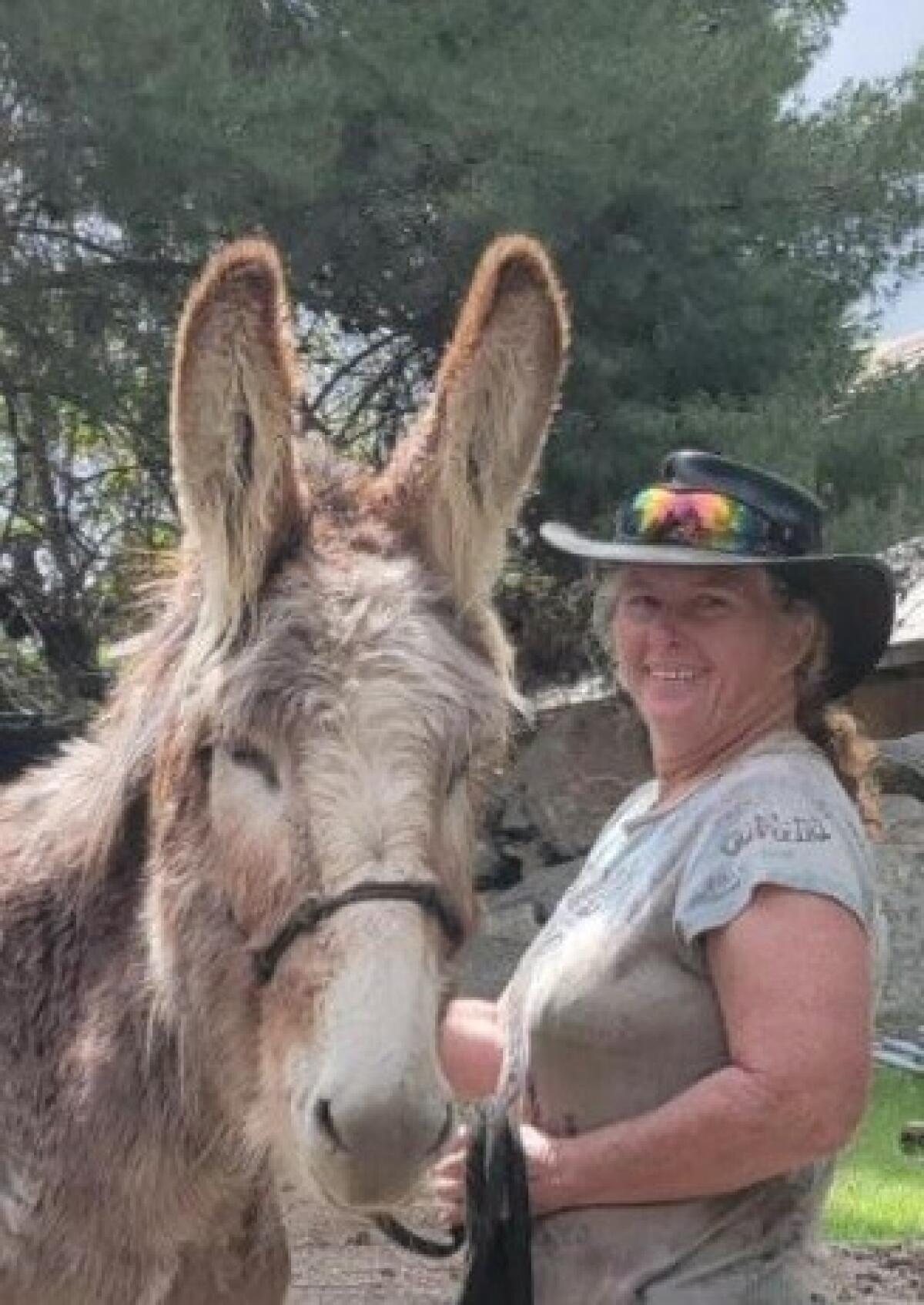
And in another “nugget,” one of the sheep gave birth in the middle of filming. The lamb, which made it into the documentary, was carried around by a young shepherdess.
Poole said she fell in love with the sheep and plans to keep them.
Bella, an Angus/Holstein cross who lives with the Pooles, was also purchased for the documentary. Like many of the animals, she required special training long before she appeared on camera.
“We got her at 6 months old, and we did a lot of work with her so she would be gentle and used to things,” Poole said.
In her big scene, Bella is calmly munching on hay when a young boy comes running into the stable and hides by jumping into the hay. Bella never flinched for her debut, despite all the activity happening around her, Poole said.
As one might expect for a film about Bethlehem, numerous donkeys were involved, often playing pack animals.
One of those donkeys was Whisper, who belongs to Nancy Nunke of Hearts & Hands Animal Rescue in Ramona.
“She was really good around the kids and the cameras and took it all in stride,” Poole said.
Whisper enjoyed a lot of close-ups in the film, and was even ridden by Rose Anaya, the actress portraying Mary.
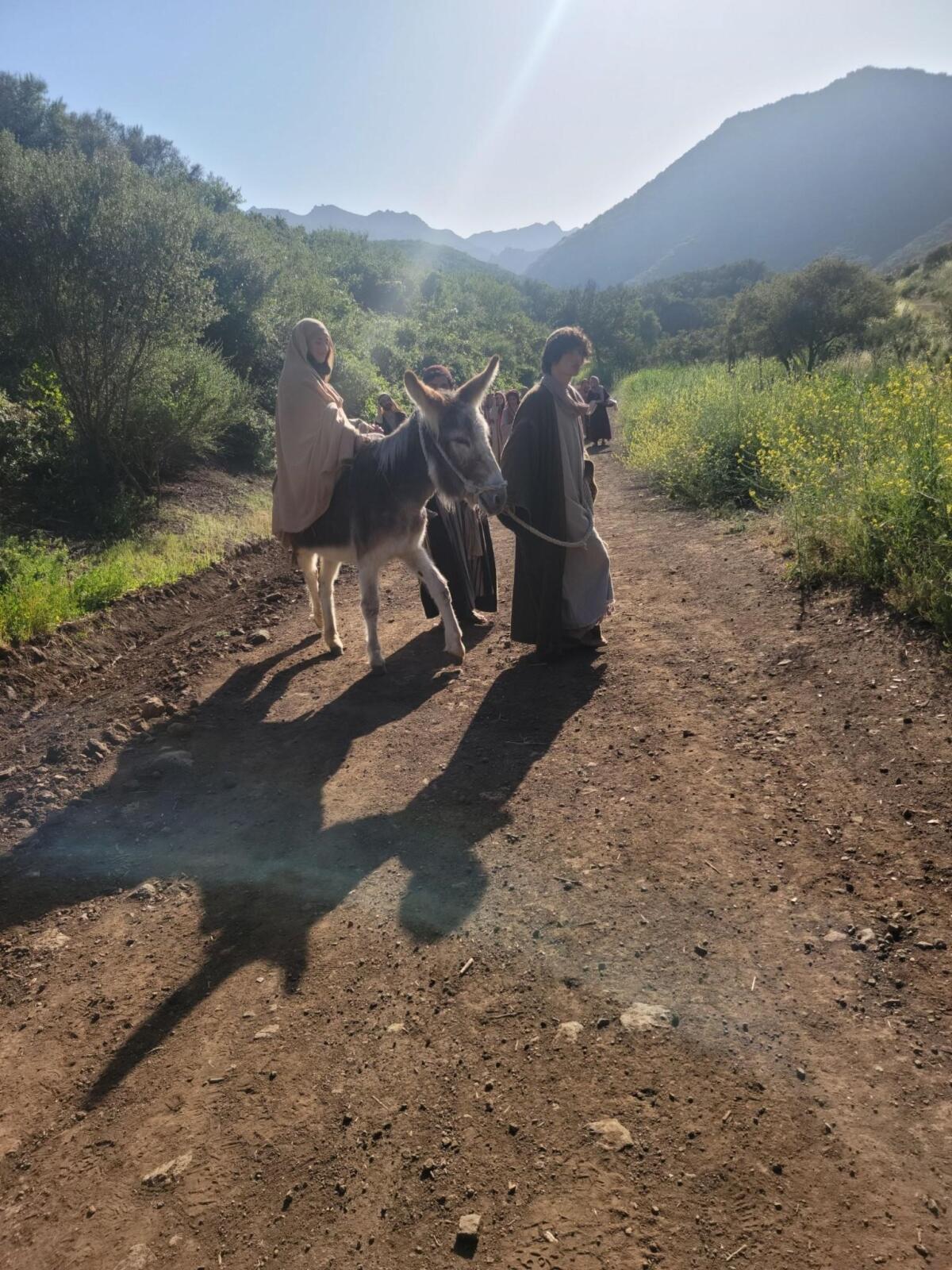
Goats were abundant in the time of the film’s setting, and more than 18 goats were used. Pigeons, chickens and horses can also be seen.
Working with animals on set requires more than just the actual filming — a lot of manual labor is involved.
“We’re not afraid of work, and it is nothing but work on a set,” Larry Poole said. “For a while, we had a 7 a.m. schedule of nine-hour days. The animals needed to be fed, loaded for travel and kept clean. It makes for long, long days with a lot of heavy things needing to be moved.”
Gil and Nancy Riegler, owners of Oasis Camel Dairy, who supplied their camels for the documentary, agreed.
Describing the overall shoot as “a magical, beautiful experience,” Nancy Riegler said that many days on set were hot and really hard.
“It was 100 degree days, and things still had to look great. The actors had to stay cooled off and the animals needed to be kept comfortable,” she said of the six-day-a-week schedule.
Being part of the film involved “the stars lining up for us,” the Rieglers said.
“For our camels to be included, it really was a Christmas miracle,” Nancy Riegler said. “Because of COVID we weren’t doing our normal fairs in June, and the bulk of the filming days were in June.”
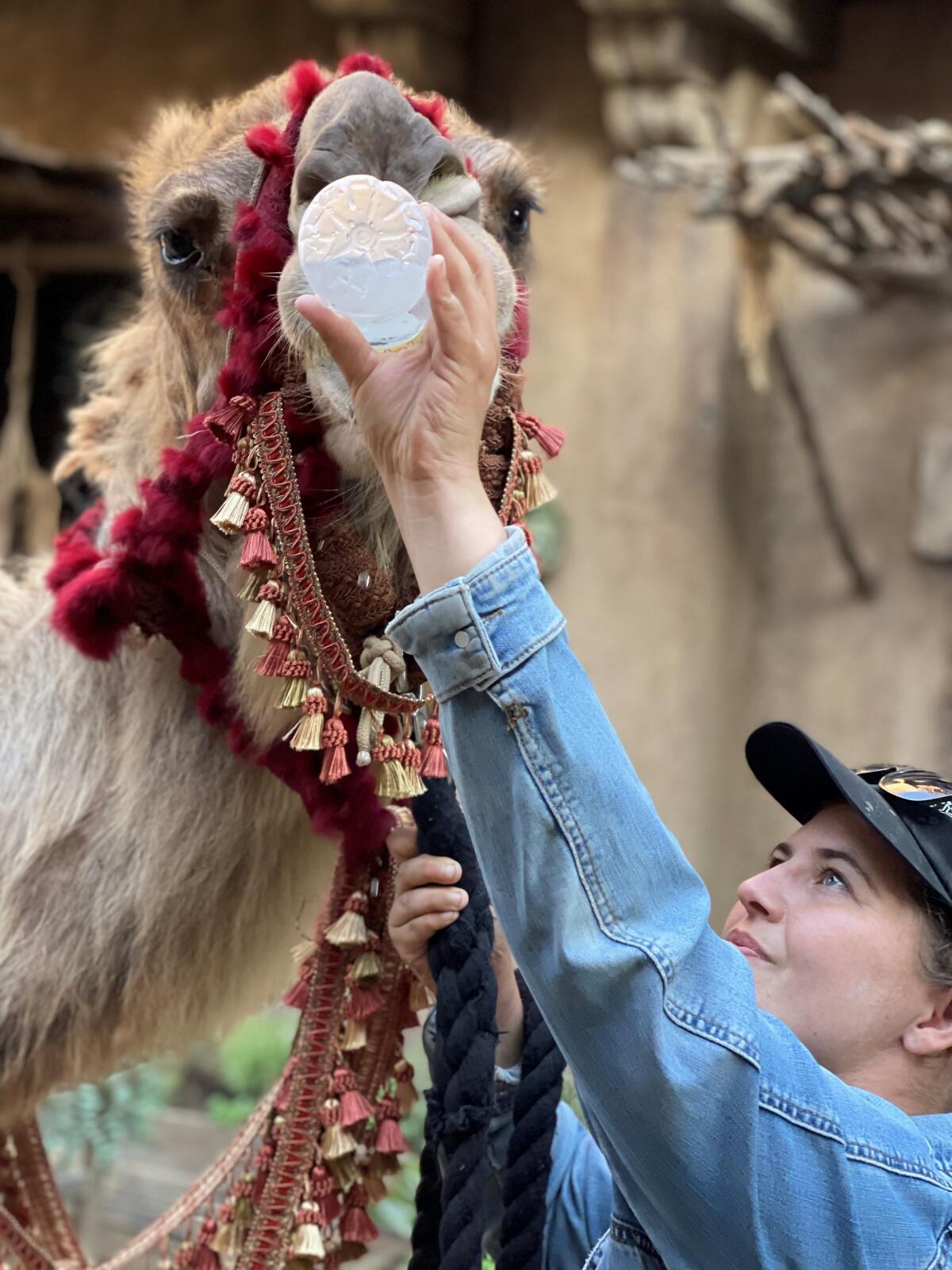
The couple had previously showcased their camels at Shadow Mountain Church in El Cajon as part of its annual living Nativity.
“Every year we would bring Camelot, a donkey and some sheep,” Riegler said. “They film it and the worship goes out worldwide. They have millions of viewers.”
The Rieglers were first contacted about the film about three years ago.
“At that time, it was going to be a medium-sized project. They were on our property quite a bit, scouting out locations and animals,” Nancy Riegler recalled.
It turned out that not only were the Rieglers available with their camels, but the weekend before the first day of filming they had scheduled a camel training camp.
“For three days, we had 20 people handling all our trained camels,” Riegler said. “Even though the camels could immediately see the people didn’t know what they were doing, by the end of the weekend, they could walk the camels anywhere. It set us up so well for the film shoot.”
The Rieglers provided seven camels per shooting, although only six were used, Gil Riegler said.
The couple also took care to give their camels many different looks. So even if it is the same camel appearing in every scene, the audience believes they are watching multiple animals.
And while Nancy Riegler said she was careful to stay out of as many shots as possible, her husband was featured in several.
“When the different wise men come together and proceed through Bethlehem, Gil was leading Jamal, they both look so correct and phenomenal in this movie,” she said.
Shooting scenes in the desert with the camels was a highlight of the film for the Rieglers.
“Our camels have never been to the desert, so taking them out to Glamis for the shoot was a big deal,” Gil Riegler said. “We took time to let them play in the sand before we got them dressed up for their shots. They loved it, it was so much fun.”
More to Read
Sign up for Essential California
The most important California stories and recommendations in your inbox every morning.
You may occasionally receive promotional content from the Los Angeles Times.


